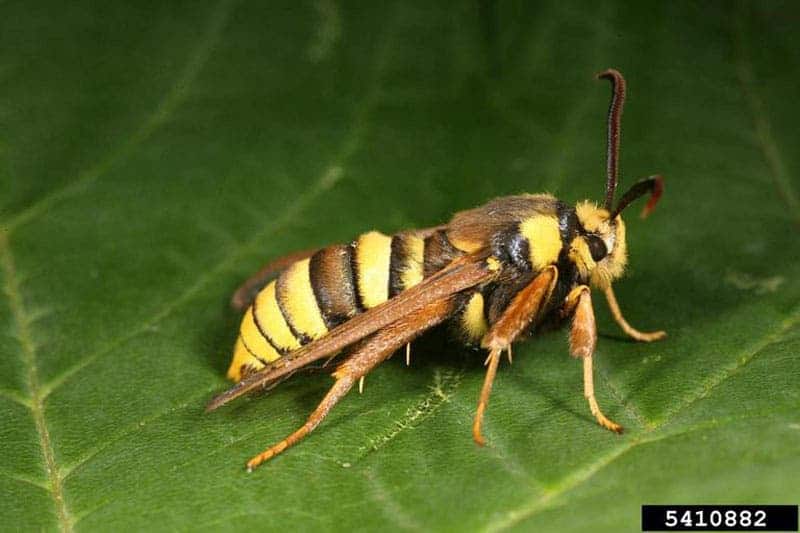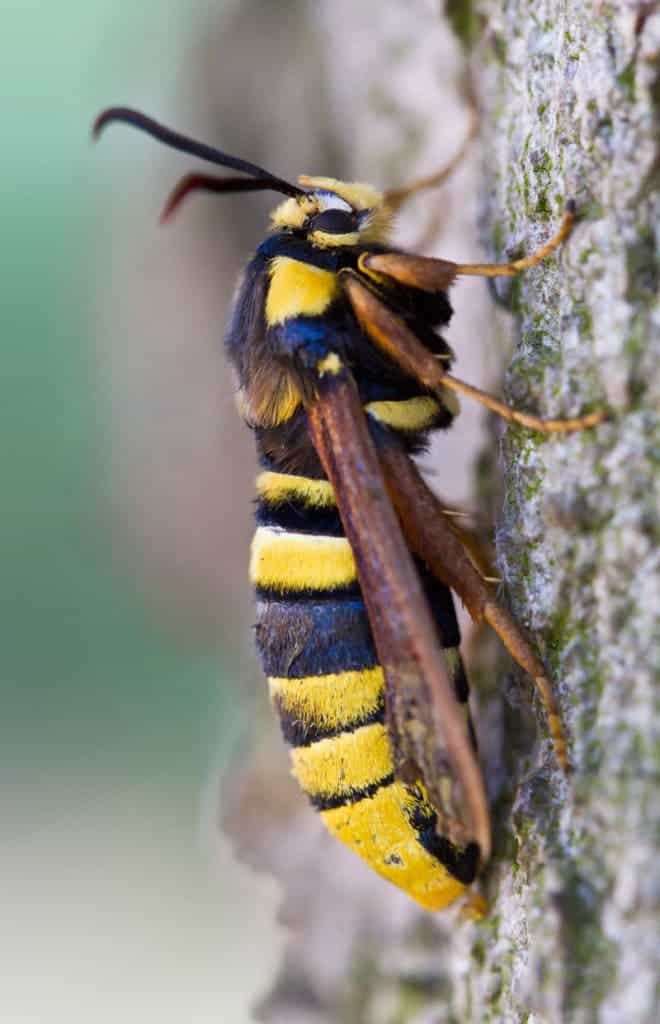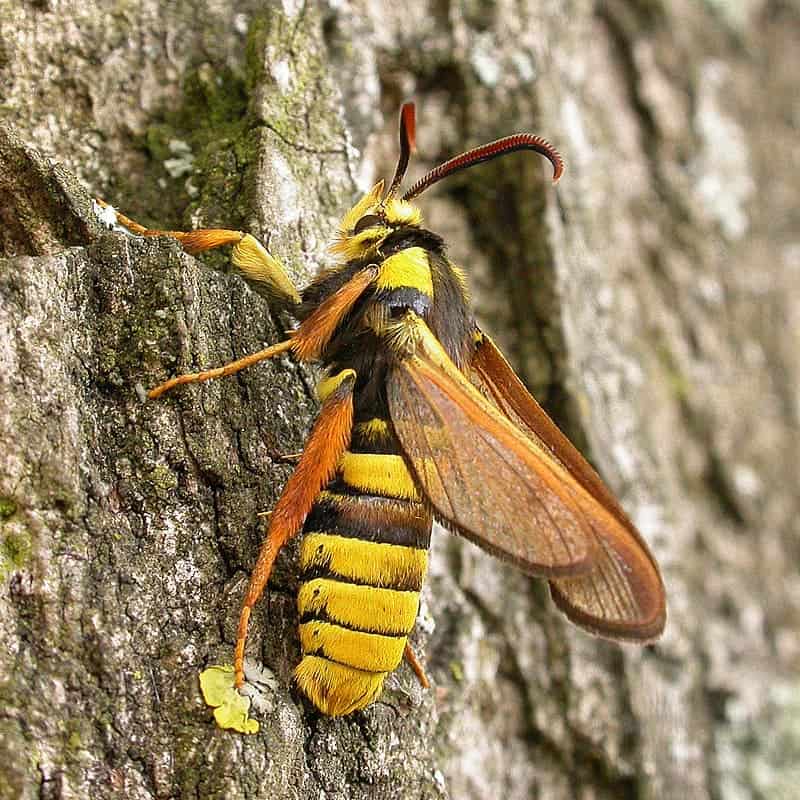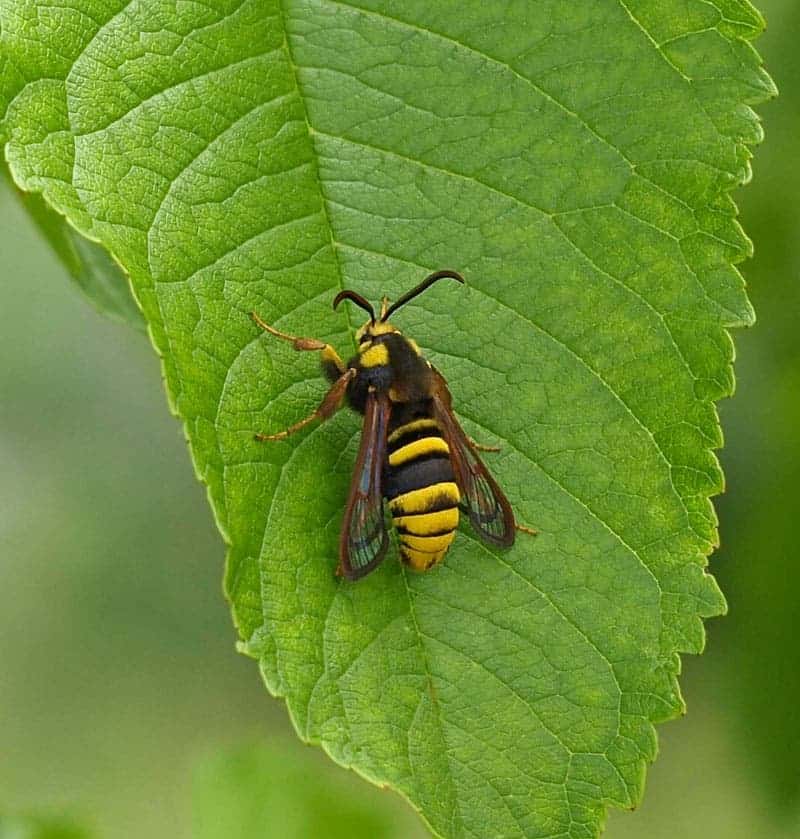Acting tougher than you really are is not uncommon in the natural world – but this moth has taken it to the next level. The Hornet Moth (Sesia apiformis) has evolved to mimic not only the look, but also the mannerisms of a real hornet.
The Hornet Moth is a large moth with a wingspan of 33–48 mm. It has a yellow branded abdomen and it has also developed a jerky flight when disturbed – much like the hornet does.
The larvae burrow into the wood of black poplar (Populus nigra), and other species of poplar. The moths emerge in June and July, and can be found low down on the trunks in early to mid morning. However, the moth can be found in a variety of habitats, such as parks, hedgerows, golf courses, quarries, pits, fens, plantation edges, pond edges, damp woodland and marshy areas with mature willows.
It overwinters as a larva one and sometimes two times, after which it stays in its cocoon for another winter. The females lay their eggs at the base of poplar trees, the larval food plant .The larva hatch and feed mainly just beneath the surface of the bark, near ground or below it. Exit holes can often be seen near the base of poplar trees and there may be pupal cases nearby.The pupal exuvia may also be seen protruding from the exit holes on the trunk of the host tree.














